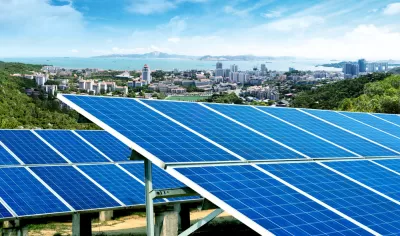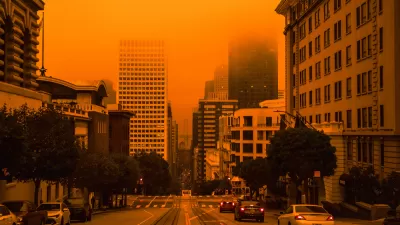Last month, politicians, energy executives, and energy experts met in Istanbul for the 23rd World Energy Congress. The event gives global leaders a chance to coordinate energy policy, discuss new ideas, and seek solutions to climate change

At previous congresses, the role of cities in energy creation, consumption, and activism was rarely discussed. This year, a new report hoped to change that. Written by Arup at the behest of event organizer the World Energy Council, the document points out that cities consume the majority of the world’s energy and house the majority of its people, but have little control over how energy is produced, distributed, or used. Urban areas matter in global energy discussions for a simple reason: they use almost two-thirds of the world’s energy and account for more than 70% of all greenhouse gases. Buildings — most of which are located, of course, in cities — consume 51% of the world’s nonindustrial energy. And cities will become even more relevant to global energy planning as urban centers grow. According to the United Nations, two-thirds of the world’s population will live in cities by 2050.
FULL STORY: How cities will lead the energy future

Coming Soon to Ohio: The Largest Agrivoltaic Farm in the US
The ambitious 6,000-acre project will combine an 800-watt solar farm with crop and livestock production.

Pennsylvania Mall Conversion Bill Passes House
If passed, the bill would promote the adaptive reuse of defunct commercial buildings.

U.S. Supreme Court: California's Impact Fees May Violate Takings Clause
A California property owner took El Dorado County to state court after paying a traffic impact fee he felt was exorbitant. He lost in trial court, appellate court, and the California Supreme Court denied review. Then the U.S. Supreme Court acted.

Divvy Introduces E-Bike Charging Docks
New, circular docks let e-bikes charge at stations, eliminating the need for frequent battery swaps.

How Freeway Projects Impact Climate Resilience
In addition to displacement and public health impacts, highway expansions can also make communities less resilient to flooding and other climate-related disasters.

California Grid Runs on 100% Renewable Energy for Over 9 Hours
The state’s energy grid was entirely powered by clean energy for some portion of the day on 37 out of the last 45 days.
City of Costa Mesa
Licking County
Barrett Planning Group LLC
HUD's Office of Policy Development and Research
Mpact Transit + Community
HUD's Office of Policy Development and Research
Tufts University, Department of Urban and Environmental Policy & Planning
City of Universal City TX
ULI Northwest Arkansas
Urban Design for Planners 1: Software Tools
This six-course series explores essential urban design concepts using open source software and equips planners with the tools they need to participate fully in the urban design process.
Planning for Universal Design
Learn the tools for implementing Universal Design in planning regulations.

























